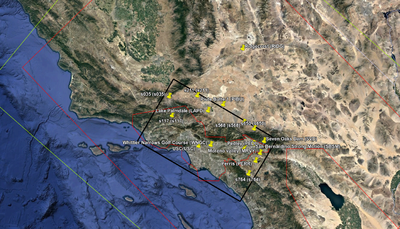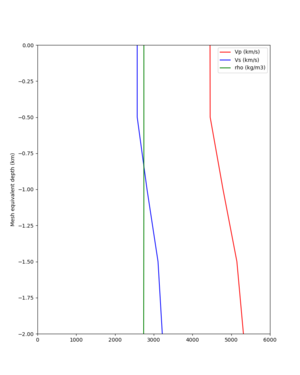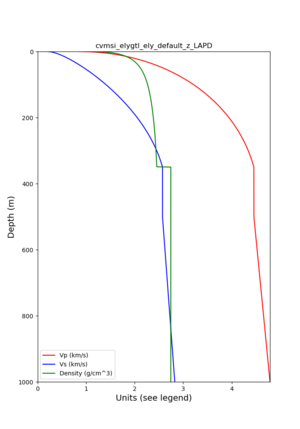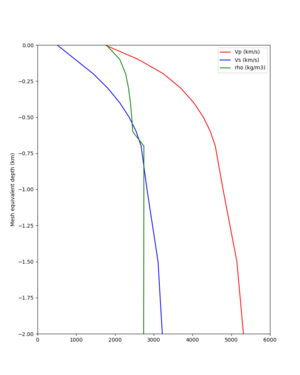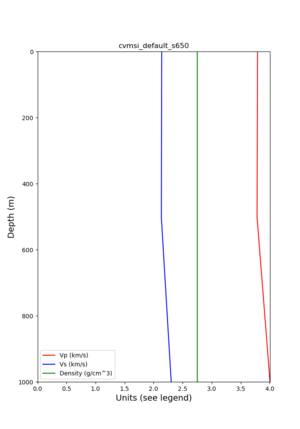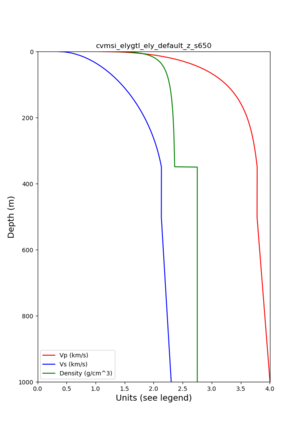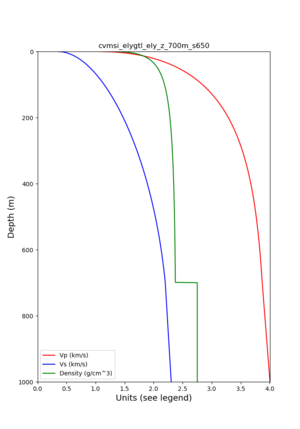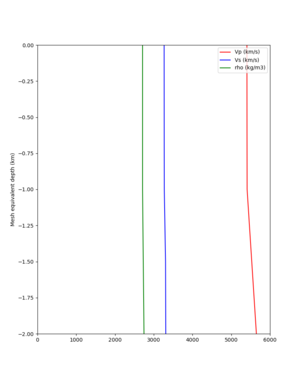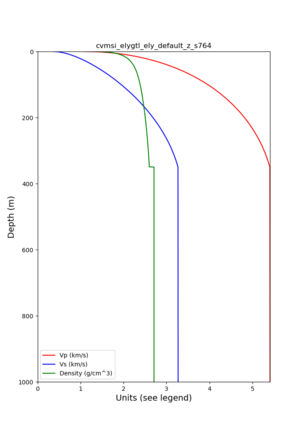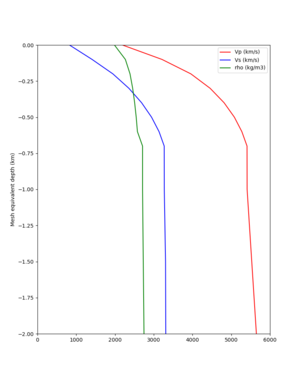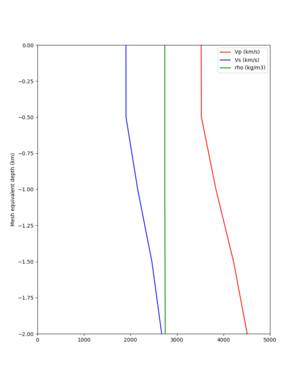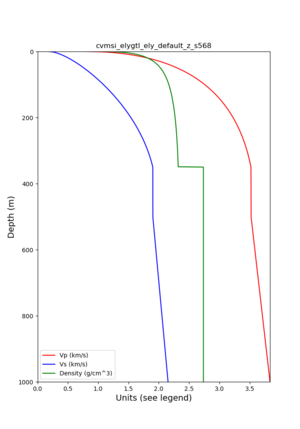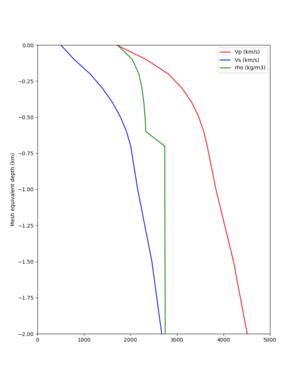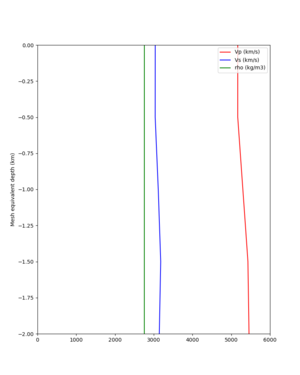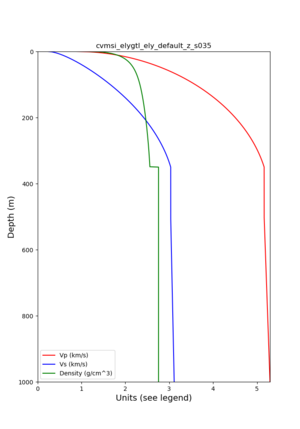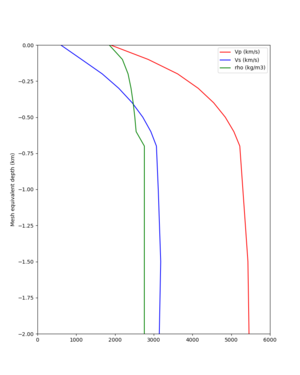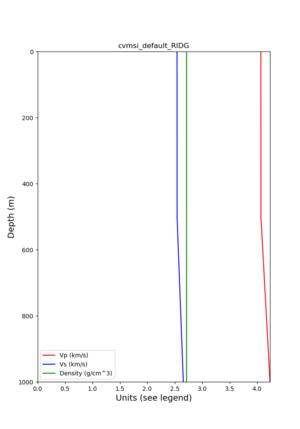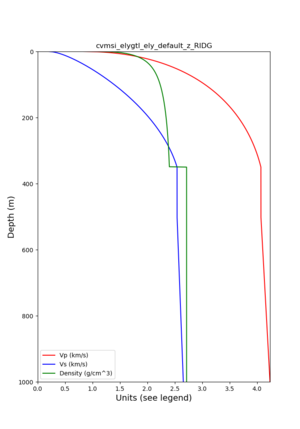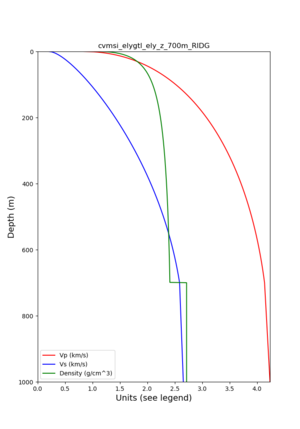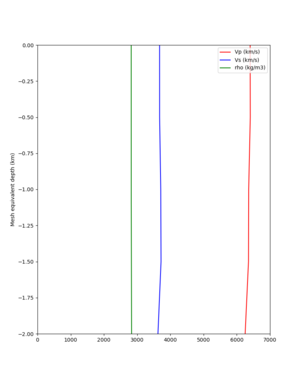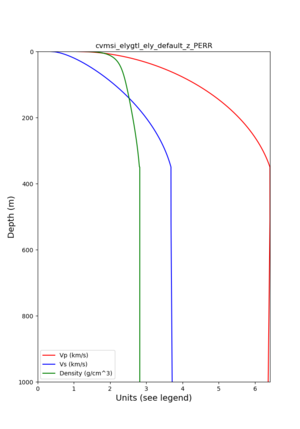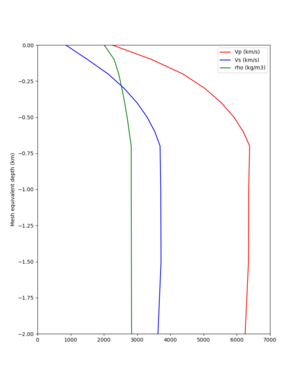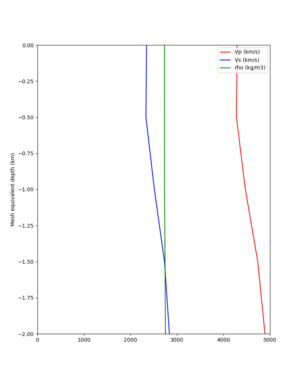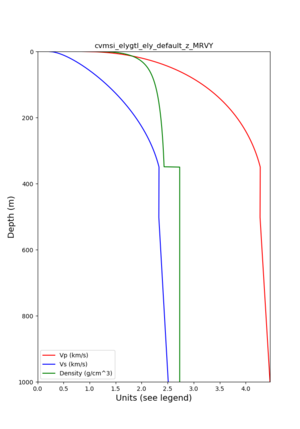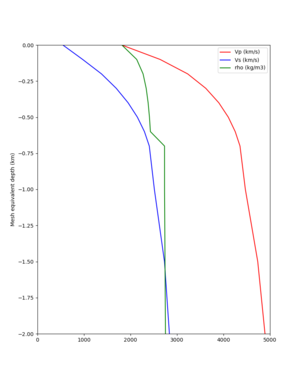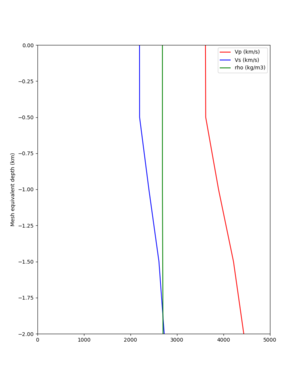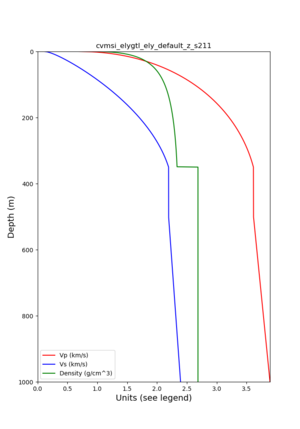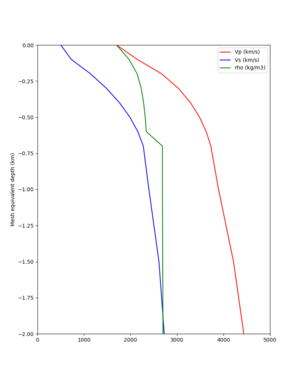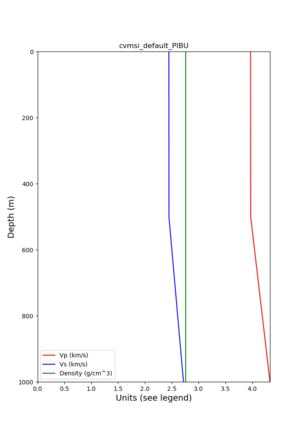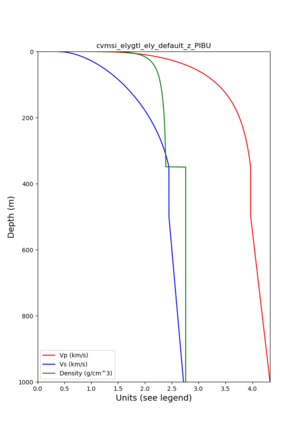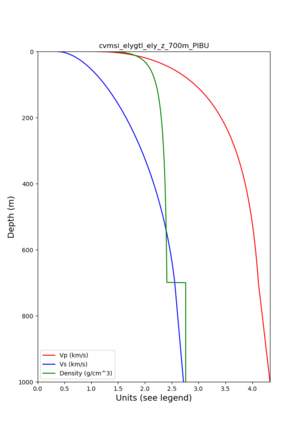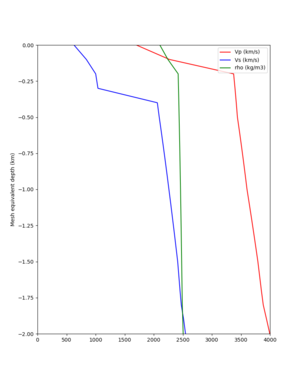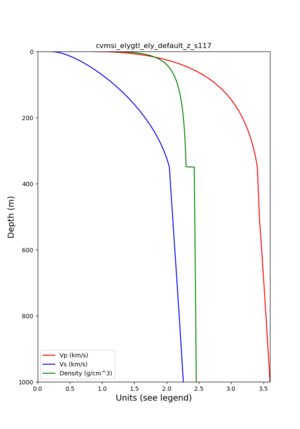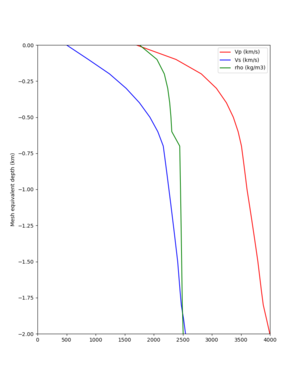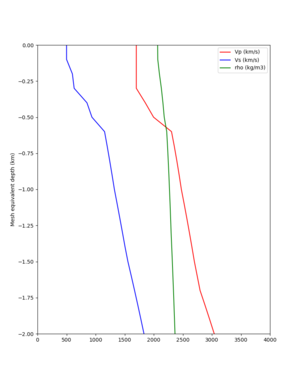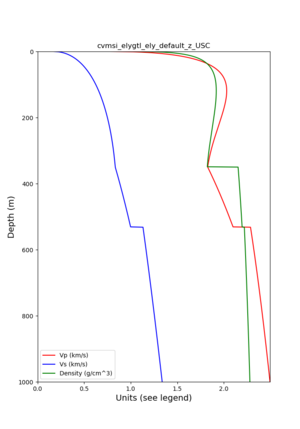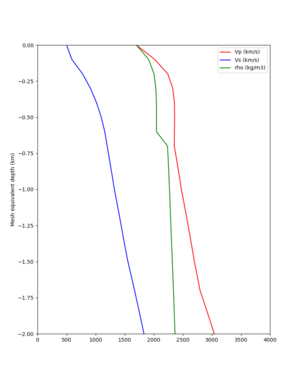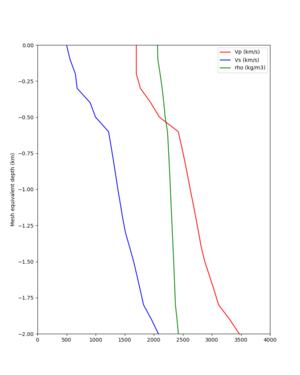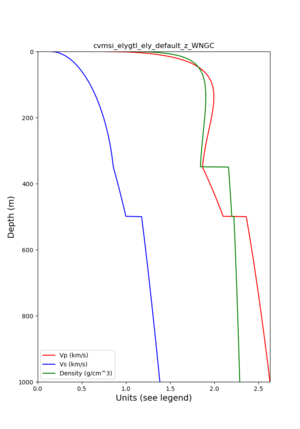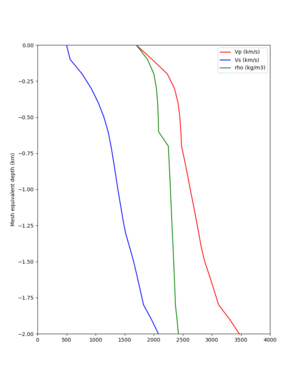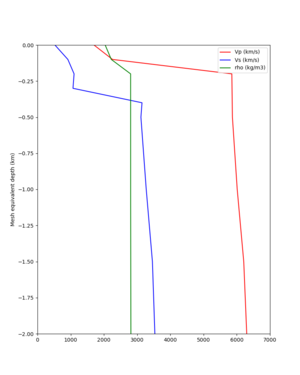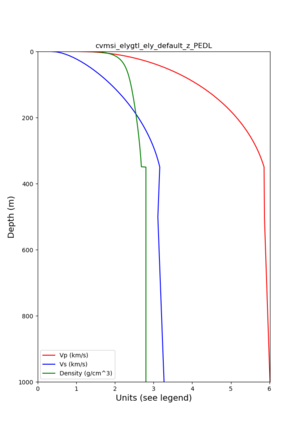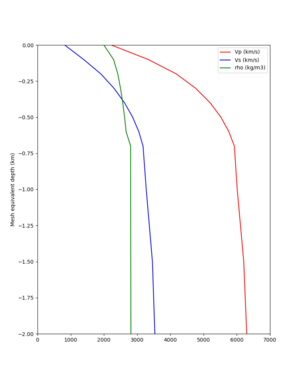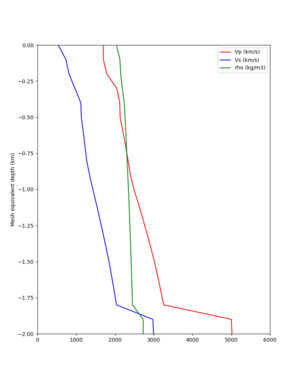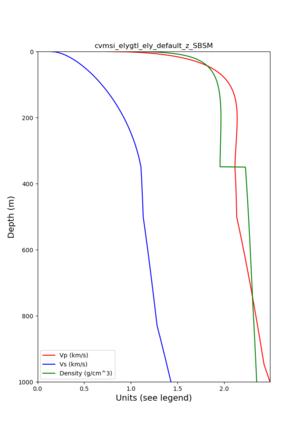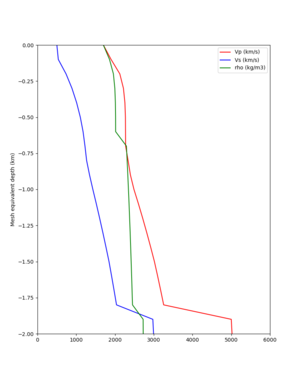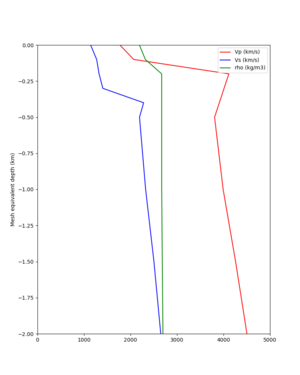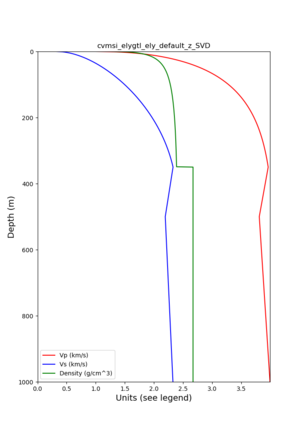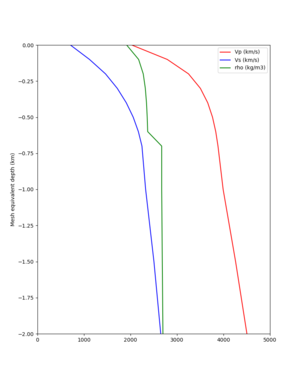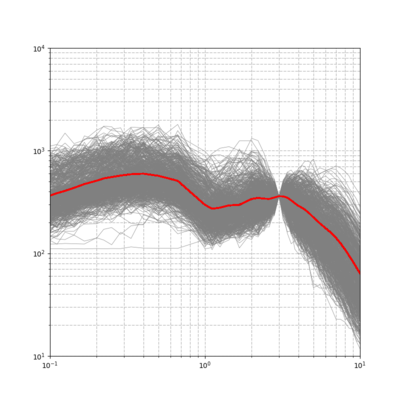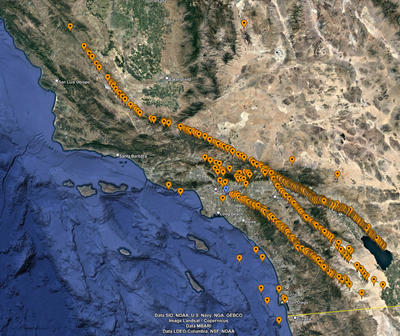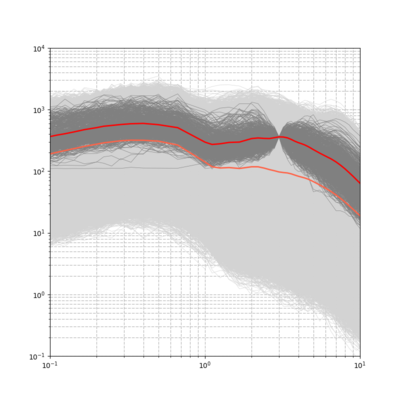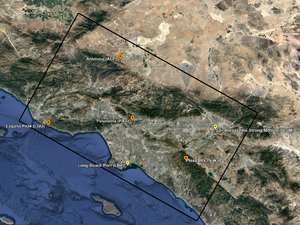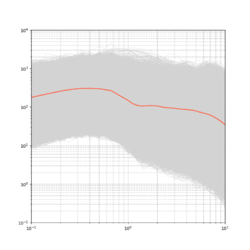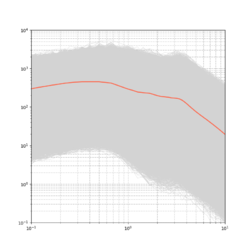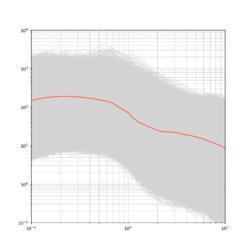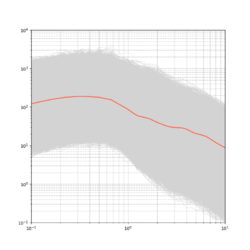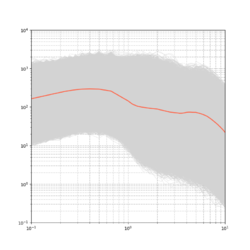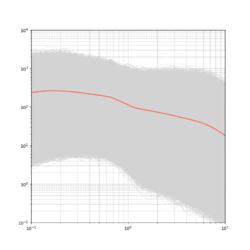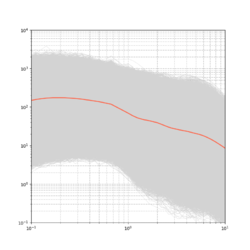Difference between revisions of "CyberShake Study 22.12"
| Line 124: | Line 124: | ||
#Query the CVM-S4.26 model ('cvmsi' string in UCVM) for each grid point. | #Query the CVM-S4.26 model ('cvmsi' string in UCVM) for each grid point. | ||
| − | #Check the Vs value at | + | #Check the Vs value at the grid point latitude and longitude with depth=0: |
##If Vs<1000, leave the data unchanged. | ##If Vs<1000, leave the data unchanged. | ||
##If Vs>=1000, then apply the Ely GTL using 700m as the transition depth. We will still populate the surface mesh point by querying at a depth of 25m. | ##If Vs>=1000, then apply the Ely GTL using 700m as the transition depth. We will still populate the surface mesh point by querying at a depth of 25m. | ||
Revision as of 17:42, 23 September 2022
CyberShake Study 22.10 is a proposed study in Southern California which will include deterministic low-frequency (0-1 Hz) and stochastic high-frequency (1-50 Hz) simulations. We will use the Graves & Pitarka (2019) rupture generator and the high frequency modules from the SCEC Broadband Platform v22.4.
Contents
- 1 Status
- 2 Data Products
- 3 Science Goals
- 4 Technical Goals
- 5 Sites
- 6 Velocity Model
- 7 High-frequency codes
- 8 Spectral Content around 1 Hz
- 9 Verification
- 10 Updates and Enhancements
- 11 Output Data Products
- 12 Computational and Data Estimates
- 13 Lessons Learned
- 14 Stress Test
- 15 Performance Metrics
- 16 Production Checklist
- 17 Presentations, Posters, and Papers
Status
This study is in the planning phase. We estimate calculations will begin in October 2022.
Data Products
Science Goals
Technical Goals
Sites
Velocity Model
We are planning to use CVM-S4.26 with a GTL applied, and the CVM-S4 1D background model outside of the region boundaries.
We are investigating applying the Ely-Jordan GTL down to 700 m instead of the default of 350m. We extracted profiles for a series of southern California CyberShake sites, with no GTL, a GTL applied down to 350m, and a GTL applied down to 700m.
Sites (the CVM-S4.26 basins are outlined in red):
These are for sites outside of the CVM-S4.26 basins:
| Site | No GTL | 350m GTL | 700m GTL |
|---|---|---|---|
| LAPD | |||
| s650 | |||
| s764 | |||
| s568 | |||
| s035 | |||
| RIDG | |||
| PERR | |||
| MRVY | |||
| s211 | |||
| PIBU |
These are for sites inside of the CVM-S4.26 basins:
| Site | No GTL | 350m GTL | 700m GTL |
|---|---|---|---|
| s117 | |||
| USC | |||
| WNGC | |||
| PEDL | |||
| SBSM | |||
| SVD |
Proposed Algorithm
Our proposed algorithm for generating the velocity model is as follows:
- Query the CVM-S4.26 model ('cvmsi' string in UCVM) for each grid point.
- Check the Vs value at the grid point latitude and longitude with depth=0:
- If Vs<1000, leave the data unchanged.
- If Vs>=1000, then apply the Ely GTL using 700m as the transition depth. We will still populate the surface mesh point by querying at a depth of 25m.
High-frequency codes
For this study, we will use the Graves & Pitarka high frequency module (hb_high) from the Broadband Platform v22.4, hb_high_v6.0.5. We will use the following parameters. Parameters in bold have been changed for this study.
| Parameter | Value |
|---|---|
| stress_average | 50 |
| rayset | 2,1,2 |
| siteamp | 1 |
| nbu | 4 (not used) |
| ifft | 0 (not used) |
| flol | 0.02 (not used) |
| fhil | 19.9 (not used) |
| irand | Seed used for generating SRF |
| tlen | Seismogram length, in sec |
| dt | 0.01 |
| fmax | 10 (not used) |
| kappa | 0.04 |
| qfexp | 0.6 |
| mean_rvfac | 0.775 |
| range_rvfac | 0.1 |
| rvfac | Calculated using BBP hfsims_cfg.py code |
| shal_rvfac | 0.6 |
| deep_rvfac | 0.6 |
| czero | 2 |
| c_alpha | -99 |
| sm | -1 |
| vr | -1 |
| vsmoho | 999.9 |
| nlskip | -99 |
| vpsig | 0 |
| vshsig | 0 |
| rhosig | 0 |
| qssig | 0 |
| icflag | 1 |
| velname | -1 |
| fa_sig1 | 0 |
| fa_sig2 | 0 |
| rvsig1 | 0.1 |
| ipdur_model | 11 |
| ispar_adjust | 1 |
| targ_mag | -1 |
| fault_area | -1 |
| default_c0 | 57 |
| default_c1 | 34 |
Spectral Content around 1 Hz
We investigated the spectral content of the Broadband CyberShake results in the 0.5-3 second range, to look for any discontinuities.
The plot below is from WNGC, Study 15.12 (run ID 4293).
Below is a plot of the hypocenters from the 706 rupture variations which meet the target.
These events have a different distribution than the rupture variations as a whole.
| Fault | Percent of target RVs | Percent of all RVs |
|---|---|---|
| San Andreas | 60 | 44 |
| Elsinore | 21 | 9 |
| San Jacinto | 13 | 8 |
| Other | 6 | 39 |
Additionally, 88% of the selected events have a magnitude greater than the average for their source. 4% are average, and 8% are lower.
Below is a spectral plot but which includes all rupture variations and the overall mean (in orange).
Additional Sites
We created spectral plots for 7 additional sites (STNI, SBSM, PAS, LGU, LBP, ALP, PLS), located here:
| STNI | SBSM | PAS | LGU | LBP | ALP | PLS |
|---|---|---|---|---|---|---|
Verification
Updates and Enhancements
Output Data Products
Computational and Data Estimates
Lessons Learned
Stress Test
Performance Metrics
Production Checklist
Science to-dos
- Perform validation for Northridge, Chino Hills, Whittier, Landers, Hector Mine, and North Palm Springs
- For each validation event, calculate BBP results, CS results, and CS results with BBP Vs30 values
- Check for spectral discontinuities around 1 Hz
Decide if we should stick with rvfrac=0.8 or allow it to vary
- Determine appropriate SGT, low-frequency, and high-frequency seismogram durations
- Update high-frequency Vs30 to use released Thompson values
Technical to-dos
Integrate refactoring of BBP codes into latest BBP releaseSwitch to using github repo version of CyberShake on SummitUpdate to latest UCVM (v22.7)- Switch to optimized version of rupture generator
- Test DirectSynth code with fixed memory leak from Frontera
- Switch to using Pegasus-supported interface to Globus transfers
- Test bundled glide-in jobs for SGT and DirectSynth jobs
